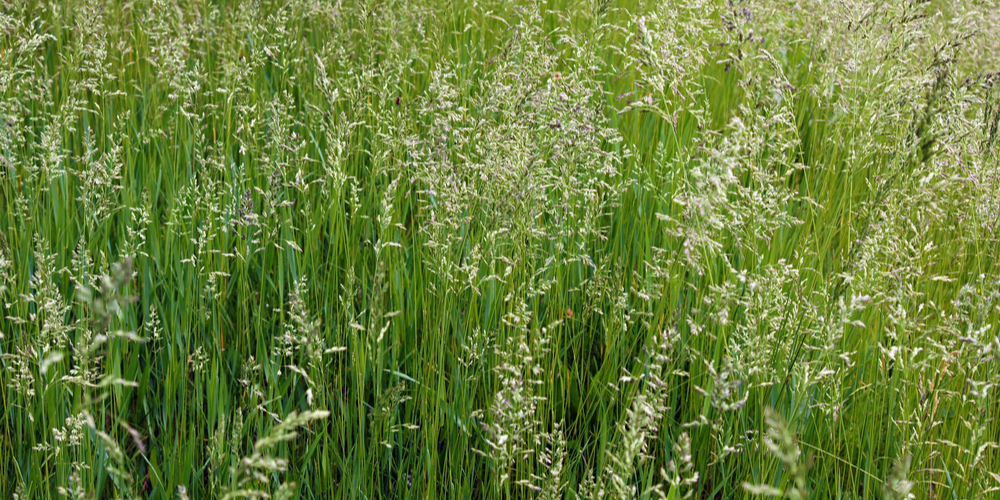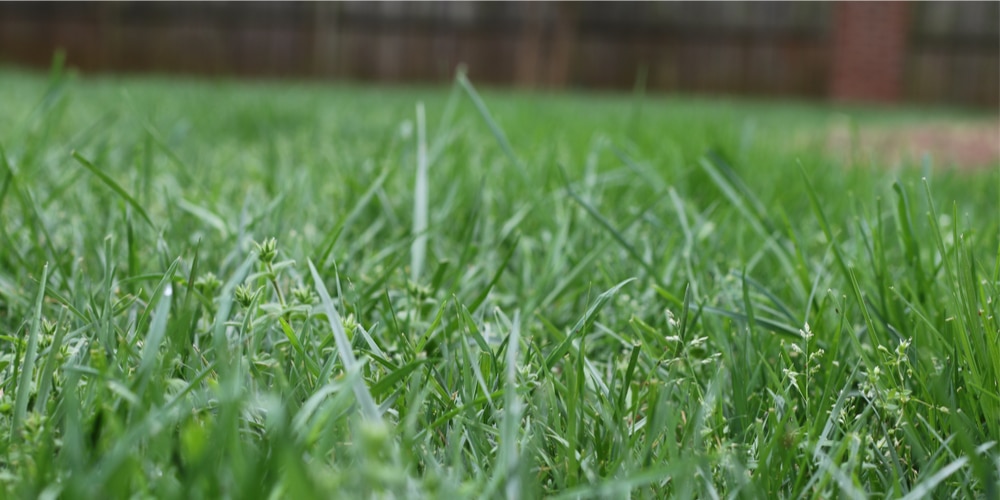Fescue grasses are cool-season lawns that many gardeners praise for their adaptability to several climate and soil conditions. Plus, they tend to have a higher tolerance for shady areas, which not many types of grass have.
There are various species of fescue grass, all with slightly different performances and requirements. Among them, tall fescue is one of the best ones. This grass will tolerate cold, heat, and drought conditions. Additionally, you won’t have to deal with bare patches caused by shady areas: this type of lawn has one of the best performance in sun-deprived situations.
Why Choose Tall Fescue
This versatile grass might be your best option if you live in hardiness zones between 5 and 7. In warmer regions, you may encounter some problems, including a high occurrence of fungal diseases. For this reason, if you live in a USDA hardiness zone above 8, you may have to look for another type of grass. Otherwise, rejoice because this lawn will save you lots of headaches.
If you have grown grass before, you know how challenging it may be to maintain your lawn looking healthy and brilliant. There is a lot more than just watering and mowing your grass once a week. However, with tall fescue, you may have an easier time. But how does tall fescue spread? Read on to find out about everything you need to know about this stunning cool-season grass.
Here, we include all the information you must have to help you make the most out of your lawn. Your yard will be the envy of your neighbors!
How Does Tall Fescue Spread?
Tall fescue is one of the best options for gardeners that like the idea of having a lawn but prefer not to get lots of headaches to maintain it. But what makes fescue different?
First of all, tall fescue grows in clumps, unlike most grasses (that spread by horizontal stems above and below the ground). Because of such characteristics, it mainly spreads through vertical shoots called “tillers” that grow from the base of the grass.
Contrary to other grasses, fescue is not as aggressive. You can easily contain it and keep it out from flower beds. However, this also comes with a drawback: you will have a more challenging time recovering this grass after damage. For this reason, you must provide your lawn with adequate care to prevent any issues that might leave you with patchy grass.
Tall fescue also has an extensive root system that explains its tolerance to various soil and weather conditions. Still, you will have to give it the water and nutrients it needs to ensure it thrives in your garden.
While tall fescue tolerates shade better than most types of cool-season lawn grasses, you will still have to provide it with what it needs to survive to ensure you limit possible damages to nearly zero.
Tall Fescue Caring Tips
Plat your tall fescue during the fall season to get the best results. At this time of the year, temperatures are still warm enough to ensure your lawn will establish before being exposed to extreme cold, but not too much as to make your grass susceptible to attacks of pests and diseases.
If you planted your grass in your yard, chances are some parts of it won’t receive as much sunlight as others. While it might sound trivial, you will need to adjust your watering, mowing, and fertilizing schedule to these areas. Indeed, a lawn that doesn’t receive plenty of hours of direct sunlight requires less watering and more phosphorous. Plus, you will have to mow it less frequently and leave it slightly taller than in sunny areas of your garden. Indeed, short blades won’t be as strong as longer ones in the shade.
While this type of grass is generally resistant to most diseases, you will still have t monitor weeds and other fungal infections. Ensure you don’t overwater your lawn. Soggy environments will make your grass unhealthy. Also, you may want to use pre-emergence weed control products to prevent the spread of aggressive weeds that might take over your garden.
How Does Tall Fescue Spread?: The Bottom Line
As you can see, growing tall fescue isn’t as complicated as with other grasses. Because of the way it spreads, you might have a challenging time having it recover from damage. For this reason, make sure you prevent or minimize all possible problems!
Related Article: Does Fescue Grow in Shade?

